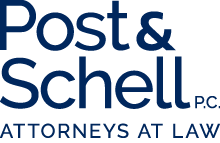

Affordable Care Act Penalties Under the Internal Revenue Code, Part II

Introduction
This continues my discussion of the penalties under the Internal Revenue Code that are associated with the Affordable Care Act (the “Act”).
I previously reviewed the reporting requirements and the associated penalties. I will now review penalties under section 4980H, which serve to enforce the Act’s requirements for minimum essential coverage.
The Employer Shared Responsibility Payment
Section 4980H imposes liability in two situations:
- Under 4980H(a), where an “applicable large employer fails to offer to its full-time employees (and their dependents) the opportunity to enroll in minimum essential coverage under an eligible employer-sponsored plan,”1 and “at least one full-time employee of the applicable large employer has been certified . . . as having enrolled for such month in a qualified health plan with respect to which an applicable premium tax credit or cost-sharing reduction is allowed or paid with respect to the employee.”2
- Under 4980H(b), where “an applicable large employer offers to its full-time employees (and their dependents) the opportunity to enroll in minimum essential coverage under an eligible employer-sponsored plan (as defined in section 5000A(f)(2)) for any month,3 and “1 or more full-time employees of the applicable large employer has been certified. . . as having enrolled for such month in a qualified health plan with respect to which an applicable premium tax credit or cost-sharing reduction is allowed or paid with respect to the employee.”4
While neither provision is a model of clarity, the concept driving section 4980H(a) is straightforward: The employer has not offered its employees health insurance coverage. Since section 4980H(a) reaches employers who do not offer coverage, it is apparent that section 4980H(b) is for employers who offer coverage that fails to meet certain standards. Before exploring those standards, it makes sense to figure out who is subject to them.
An ALE
Both sections 4980H(a) and 4980H(b) refer to an “applicable large employer.”5 Tax professionals revel in acronyms, so the entities subject to section 4980H had to be called “ALEs.”
An ALE is a defined term: An employer is an ALE if “with respect to a calendar year, an employer who employed an average of at least 50 full-time employees on business days during the preceding calendar year.”6 That sounds like a simple definition but there are some special rules.
First, employers may not be ALEs if they have seasonal workers: “An employer shall not be considered to employ more than 50 full-time employees if-(I) the employer’s workforce exceeds 50 full-time employees for 120 days or fewer during the calendar year, and (II) the employees in excess of 50 employed during such 120-day period were seasonal workers.”7 Under this exception, an employer with a very large workforce might not be an applicable large employer.
Second, part-time employees count to determine whether an employer is an ALE:
Solely for purposes of determining whether an employer is an applicable large employer under this paragraph, an employer shall, in addition to the number of full-time employees for any month otherwise determined, include for such month a number of full-time employees determined by dividing the aggregate number of hours of service of employees who are not full-time employees for the month by 120.8
This means that an employer can become subject to section 4980H by accident because of part-time employees.
Once an employer is an ALE, it is exposed to liability where one or more employees is “certified” as having enrolled in a plan “with respect to which an applicable premium tax credit or cost-sharing reduction is allowed or paid with respect to the employee.”9
Premium Tax Credits and Cost Sharing Reductions
The term “applicable premium tax credit or cost-sharing reduction,” which appears in both section 4980H(a) and 4980H(b), is defined as follows:
The term “applicable premium tax credit and cost-sharing reduction” means-
(A) any premium tax credit allowed under section 36B,
(B) any cost-sharing reduction under section 1402 of the Patient Protection and Affordable Care Act, and
(C) any advance payment of such credit or reduction under section 1412 of such Act.10
From this, it becomes apparent that section 4980H is, in large measure, focused upon the cost of health insurance coverage, as the trigger for liability involves situations in which employees qualify for a cost reduction for their health coverage.
The first form of cost reduction that is relevant is a refundable tax credit, the premium tax credit under section 36B of the Code. Section 36B starts off simply enough, providing that “[i]n the case of an applicable taxpayer, there shall be allowed as a credit against the tax imposed by this subtitle for any taxable year an amount equal to the premium assistance credit amount of the taxpayer for the taxable year.”11 An applicable taxpayer is defined as “a taxpayer whose household income for the taxable year equals or exceeds 100 percent but does not exceed 400 percent of an amount equal to the poverty line for a family of the size involved.”12 The “premium assistance credit amount” is defined by reference to monthly premium assistance amounts for each month the taxpayer is covered.13
When it comes to defining what the monthly premium assistance amounts are, section 36B becomes highly complex:
The premium assistance amount determined under this subsection with respect to any coverage month is the amount equal to the lesser of-
(A) the monthly premiums for such month for 1 or more qualified health plans offered in the individual market within a State which cover the taxpayer, the taxpayer's spouse, or any dependent (as defined in section 152) of the taxpayer and which were enrolled in through an Exchange established by the State under 1311 1 of the Patient Protection and Affordable Care Act, or
(B) the excess (if any) of-
(i) the adjusted monthly premium for such month for the applicable second lowest cost silver plan with respect to the taxpayer, over
(ii) an amount equal to 1/12 of the product of the applicable percentage and the taxpayer’s household income for the taxable year.14
Applicable percentage is then defined as follows:
Except as provided in clause (ii), the applicable percentage for any taxable year shall be the percentage such that the applicable percentage for any taxpayer whose household income is within an income tier specified in the following table shall increase, on a sliding scale in a linear manner, from the initial premium percentage to the final premium percentage specified in such table for such income tier:
In the case of household income (expressed as a percent of poverty line) within the following income tier: The initial premium percentage is-The final premium percentage is-
Up to 133% 2.0% 2.0%
133% up to 150% 3.0% 4.0%
150% up to 200% 4.0% 6.3%
200% up to 250% 6.3% 8.05%
250% up to 300% 8.05% 9.5%
300% up to 400% 9.5% 9.5% 15
The language is a bit challenging, but the concept is ultimately straightforward: Poorer employees qualify for more assistance.
Premium assistance amounts apply as to “coverage months.”16 This is defined as follows:
The term “coverage month” means, with respect to an applicable taxpayer, any month if-
(i) as of the first day of such month the taxpayer, the taxpayer's spouse, or any dependent of the taxpayer is covered by a qualified health plan described in subsection (b)(2)(A) that was enrolled in through an Exchange established by the State under section 1311 of the Patient Protection and Affordable Care Act, and
(ii) the premium for coverage under such plan for such month is paid by the taxpayer (or through advance payment of the credit under subsection (a) under section 1412 of the Patient Protection and Affordable Care Act).17
The premium credit is not available if the taxpayer is eligible for minimum essential coverage other than through the individual market; accordingly, any month in which an individual is qualified for such coverage is carved out of the definition of a “coverage month.”18 Employer-sponsored coverage will fall within this exception if it meets certain cost and value standards. First, the employee’s share of the premiums cannot exceed 9.5 percent of the taxpayer’s household income, which is indexed.19 Second, the plan must comply with a minimum actuarial value standard requiring that the plan bear at least sixty percent of the total allowed cost of benefits.20
In addition to the premium tax credit under section 36B of the Code, another trigger for potential liability is “any cost-sharing reduction under section 1402 of the Patient Protection and Affordable Care Act.”21 Section 1402 of the ACA was codified as 42 U.S.C. § 18071.22
This provision mirrors section 36B of the Code, but it operates by reducing the level of cost-sharing under the plan instead of providing a tax credit.23 As with section 36B, the level of relief is tied to income levels as a percentage of the poverty line.24
The third form of “applicable premium tax credit and cost-sharing reduction” is “any advance payment of such credit or reduction under section 1412 of such Act.”25 Section 1412 of the ACA is codified at 42 U.S.C. § 18082.26 Under this provision, an exchange can request advance payment of either the premium tax credit or the cost-sharing reduction, which will be granted if the Secretary of Health and Human Services determines that the employer either did not offer minimum essential coverage or provided minimum essential coverage that was either unaffordable or did not provide the minimum actuarial value.27
The Certification Requirement
By their terms, both section 4980H(a) and section 4980H(b) tie employer liability to a certification that one or more employees under section 1411 of the Act has been enrolled in a plan “with respect to which an applicable premium tax credit or cost-sharing reduction is allowed or paid with respect to the employee.”28 Section 1411 of the Act is codified at 42 U.S.C. § 18081.29
Section 18081 provides for the Secretary of HHS to establish a program for making certain determinations, including eligibility for the premium tax credit or reduced cost-sharing and determinations on whether an individual’s coverage under an employer-sponsored health benefits plan is affordable.”30 Section 4980H regulations define the term “Section 1411 Certification” as the product of the above process.31 These regulations make clear that the receipt of a Section 1411 Certification is a necessary condition to trigger liability under section 4980H(a):
If an applicable large employer member fails to offer to its full-time employees (and their dependents) the opportunity to enroll in minimum essential coverage under an eligible employer-sponsored plan for any calendar month, and the applicable large employer member has received a Section 1411 Certification with respect to at least one full-time employee, an assessable payment is imposed.32
The same is true for section 4980H(b):
If an applicable large employer member offers to its full-time employees (and their dependents) the opportunity to enroll in minimum essential coverage under an eligible employer-sponsored plan for any calendar month (including an offer of coverage to all but five percent or less (or, if greater, five or less) of its full-time employees (provided that an employee is treated as having been offered coverage only if the employer also offers coverage to that employee's dependents)) and the applicable large employer member has received a Section 1411 Certification with respect to one or more full-time employees of the applicable large employer member, then there is imposed on the applicable large employer member an assessable payment equal to the product of the number of full-time employees of the applicable large employer member for which it has received a Section 1411 Certification (minus the number of those employees in a limited non-assessment period for certain employees and the number of other employees who were offered the opportunity to enroll in minimum essential coverage under an eligible employer-sponsored plan that satisfied minimum value and met one or more of the affordability safe harbors described in paragraph (e) of this section) and the section 4980H(b) applicable payment amount.33
If the Secretary of Health and Human Services makes a determination that an individual qualifies for either a premium tax credit or reduced cost-sharing, then it is supposed notify the relevant exchange, which is then supposed to notify the employer of that determination and of the prospect that the employer may be liable under section 4980H.34 Employers have a right to appeal that determination.35
Despite the plain language of section 4980H and the requirements of section 1411 of the Act, the IRS has been imposing liability on employers where there has been no certification from the exchange. I have seen this in two cases that I have had, and have heard from other practitioners who have had a similar experience.
In the next part of this series, I will cover the process of challenging assessments under sections 4980H, 6721, and 6722 of the Code.
Disclaimer: This post does not offer specific legal advice, nor does it create an attorney-client relationship. You should not reach any legal conclusions based on the information contained in this post without first seeking the advice of counsel.
Footnotes:
1 I.R.C. § 4980H(a)(1).
2 I.R.C. § 4980H(a)(2).
3 I.R.C. § 4980H(b)(1)(A).
4 I.R.C. § 4980H(b)(1)(B).
5 I.R.C. § 4980H(a)(1); I.R.C. § 4980H(b)(1)(A).
6 I.R.C. § 4980H(c)(2)(A).
7 I.R.C. § 4980H(c)(2)(B)(i). Seasonal worker is defined as “a worker who performs labor or services on a seasonal basis as defined by the Secretary of Labor.” I.R.C. § 4980H(c)(2)(B)(ii).
8 I.R.C. § 4980H(c)(2)(E).
9 I.R.C. § 4980H(a)(2); see also I.R.C. § 4980H(b)(1)(B) (same).
10 I.R.C. § 4980H(c)(3).
11 I.R.C. § 36B(a).
12 I.R.C. § 36B(c)(1)(A).
13 I.R.C. § 36B(b)(1), (2).
14 I.R.C. § 36B(b)(2).
15 I.R.C. § 36B(b)(3)(A)(i). These figures are indexed. I.R.C. § 36B(b)(3)(A)(ii).
16 I.R.C. § 36B(b)(2).
17 I.R.C. § 36B(c)(2)(A).
18 I.R.C. § 36B(c)(2)(B)(i).
19 I.R.C. § 36B(c)(2)(C)(i)(II) (restriction), § 36B(2)(C)(iv) (indexing).
20 I.R.C. § 36B(c)(2)(C)(ii).
21 I.R.C. § 4980H(c)(3)(B).
22 I.R.C. § 4980H, editorial note.
23 42 U.S.C. § 18071(a).
24 42 U.S.C. § 18071(c)(1)(A).
25 I.R.C. § 4980H(c)(3)(C).
26 I.R.C. § 4980H, editorial note.
27 42 U.S.C. § 18082(a)(1), (2).
28 I.R.C. § 4980H(a)(2); I.R.C. § 4980H(b)(1)(B).
29 I.R.C. § 4980H, editorial note.
30 42 U.S.C. § 18081(a).
31 See Treas. Reg. § 54.4980H-1(40) (defining Section 1411 Certification).
32 Treas. Reg. § 54.4980H-4(a).
33 Treas. Reg. § 54.4980H-5(a).
34 42 U.S.C. § 18081(e)(4)(B)(iii).
35 42 U.S.C. § 18081(f)(2)(A).


